Zastava M70
| Zastava M70 | |
|---|---|
|
A Zastava M70 AB2 | |
| Type | Assault rifle |
| Place of origin | Serbia (formerly Yugoslavia) |
| Service history | |
| In service | 1970–present |
| Used by | See Users |
| Wars |
Gulf War Yugoslav Wars Kosovo War Insurgency in the Republic of Macedonia War in Afghanistan Iraq War Libyan Civil War Syrian Civil War Iraqi Civil War[1] |
| Production history | |
| Designed | 1959–68 |
| Manufacturer | Zastava Arms |
| Produced | 1970–present |
| No. built | 4,000,000[2] |
| Variants | See Variants |
| Specifications | |
| Weight | 3.70 kg (8.2 lb) |
| Length | 940 mm (37 in) |
| Barrel length | 415 mm (16.3 in) |
|
| |
| Cartridge | 7.62×39mm |
| Action | Gas-operated (rotating bolt) |
| Rate of fire | 620 rounds/min |
| Muzzle velocity | 720 m/s (2,400 ft/s) |
| Effective firing range | 410 m (450 yd) |
| Feed system | 30-round detachable box magazine, can accept 75 round drum magazines |
| Sights | Iron sights |
The Zastava M70 (Serbian Cyrillic: Застава М70) is an assault rifle developed and produced by Zastava Arms in Serbia (formerly Yugoslavia). The design of the M70 was based on modified Soviet AK-47 and AKM assault rifles and it became the standard issue weapon in the Yugoslav People's Army in 1970. The M70 is an air-cooled, magazine-fed, selective fire rifle. This weapon is also available as the O-PAP in the USA without select fire capabilities.
History
Development of the domestic Kalashnikov variant began in 1959, and the first models submitted by Zastava for military field trials were with the early M64 (or M59) series of rifles with milled receivers, threaded barrels, familiar Zastava handguards, gas cutoffs for grenade launching, and several other diversities from the mainstay AK design, such as a bolt hold open device on the right side of the receiver, and a charging handle that appeared different from other AK models. Though performances were satisfactory, the Yugoslav military did not adopt the rifle as the standard infantry armament.[3]

In 1970, the green light was given to begin with army-funded mass production of the AP M70 and M70 A series (Automatska Puška Model 1970, "Automatic Rifle Model 1970") of which the M70 A was the folding stock version.[4] It became the standard issue weapon in the Yugoslav People's Army in 1970.[5]
Before the larger models of these rifles were made, cost-cutting measures in production resulted in the removal of the internal bolt hold open, and relocation to the magazine follower. In addition, the usual placement of the barrel through threading into the receiver was replaced by the cheaper method of pressing and pinning the barrel into the receiver.[4] Rifles produced with these new features were known as models AP M70 B (fixed stock version), and M70 AB (folding stock version).[4] As with the M70 series of automatic rifles, these models failed to be produced in larger quantities before further cost-efficiency production measures gave way to yet another model.
This time the milled receiver was replaced by a receiver stamped from a smooth 0.9 mm (0.04 in) thick sheet of steel, a firing rate reducer was added to the trigger group, and the muzzle brake replaced the muzzle nut that originally came on the two prior models; the produced models were AP M70 B1 (fixed stock) and M70 AB1 (folding stock).[4]
These models eventually failed to mass-produce as well, before final alterations to the M70 rifle design resulted with the AP M70 B2 (fixed stock) and M70 AB2 (folding stock) models. These last two models featured a thicker 1.5 mm (0.06 in) stamped receiver and bulged front trunnion, which was intended to strengthen the rifle in order to make it more suitable for frequent grenade launching.[4] These two models would become the most widely produced of the M70 series, and in turn the most widely used model used by the JNA,[4] as well as the various armed groups fighting in the Yugoslav wars of the 1990s. Parts kits imported into the U.S. however, show markings that appear to contradict the final fixed stock model name. On these kits the bulged, thicker stamped receiver model is actually the M70 B1 model.
All of the M70 models share the grenade launching ability with gas cutoff, the lengthened wooden handguard with 3 cooling slots, iron sights with flip-up illuminating elements, initially filled with phosphorus and later with tritium (Which is used on the current production M70's), to improve aiming at night; the plunger that keeps the receiver cover in place during grenade launching, and a non-chrome lined barrel. Fire selectors have R markings for automatic fire (R for rafalna, "burst fire") and J for semi-automatic fire (J for jedinačna, "single").
Design and features
The M70 can easily be told apart from other AK rifles by the three cooling slots on the foregrip, the light-coloured elm wood furniture and the black rubber buttplate on fixed-stock M70s. The M70s also have a grenade-launching sight and gas cut-off on the gas block, and are capable of launching rifle-grenades. To launch them a 22 mm diameter grenade launching adapter is screwed on in place of the slant brake or other muzzle device.
The receiver of the M70 is 1.5 mm thick, compared to the 1 mm thick receiver of the AKM, making it more rigid. The receiver has a bulge at the front to accommodate an enlarged trunnion similar to a RPK receiver, with the front trunnion rivet configuration likewise resembling a RPK and not an AKM. Likewise, the barrel is hammer forged and not chrome-lined, making it a little more accurate than a standard AKM, but at the cost of increased susceptibility to corrosion and shorter barrel life. The lack of chrome lining is unique for an AK and consistent with other Zastava built rifles of Soviet design (such as the Yugoslavian M59 or M59/66). Unlike other AK variants, a lock button must be depressed on the left side of the receiver as the first step for field stripping, to enable depressing the rear spring guide to remove the receiver dust cover. It is probable this feature is intended to prevent the loss of the top cover due to recoil when firing rifle grenades.
Variants

- M70 – milled receiver, fixed stock
- M70 A – milled receiver, underfolding stock
- M70 A1 – milled receiver, underfolding stock, mount for night or optical sights
- M70 B1 – stamped receiver, fixed stock
- M70 AB2 – stamped receiver, underfolding stock
- M70 B1N – stamped receiver, fixed stock, mount for night or optical sights
- M70 AB2N – stamped receiver, underfolding stock, mount for night or optical sights
- M70 AB3 – stamped receiver, underfolding stock, rifle grenade sight removed and replaced with a BGP 40 mm underslung grenade launcher
- M70 B3 – stamped receiver, fixed stock, rifle grenade sight removed and replaced with a BGP 40 mm underslung grenade launcher
- M92 – carbine, the shorter variant of the M70AB2
- PAP M70 – semi-automatic variant intended for the civilian market
- Tabuk Sniper Rifle - Iraqi long barrel stamped receiver and fixed stock variant
Users
After the breakup of Yugoslavia, the military inventory of each republic passed to the successor states.
 Afghanistan
Afghanistan Albania
Albania Angola[6]
Angola[6] Bosnia and Herzegovina[7]
Bosnia and Herzegovina[7] 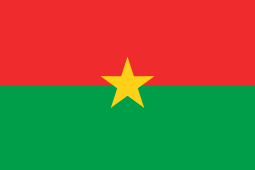 Burkina Faso[8]
Burkina Faso[8]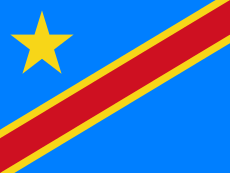 Congo-Kinshasa[9]
Congo-Kinshasa[9] Croatian Army (planned withdrawal from service)
Croatian Army (planned withdrawal from service)  Cyprus[10]
Cyprus[10]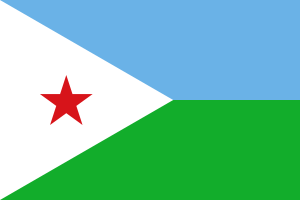 Djibouti[11]
Djibouti[11] Iraq
Iraq 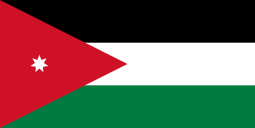 Jordan[12]
Jordan[12]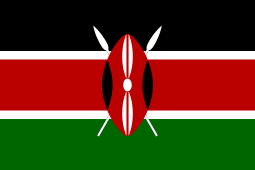 Kenya Police[13]
Kenya Police[13]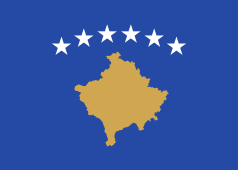 Kosovo Security Force[14]
Kosovo Security Force[14]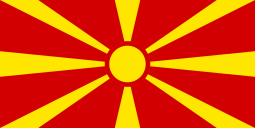 Army of the Republic of Macedonia
Army of the Republic of Macedonia 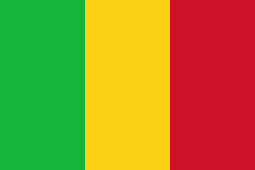 Mali
Mali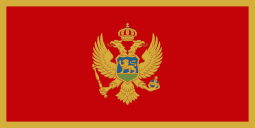 Montenegro[15]
Montenegro[15]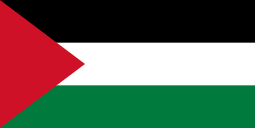 Palestinian Authority[16]
Palestinian Authority[16]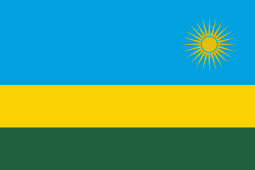 Rwanda[17]
Rwanda[17] Saudi Arabia[18]
Saudi Arabia[18] Serbia[19] (planned sale of the old M70 made in Yugoslavia, and replacing the new more modern version)
Serbia[19] (planned sale of the old M70 made in Yugoslavia, and replacing the new more modern version) Slovenian Police[20]
Slovenian Police[20] 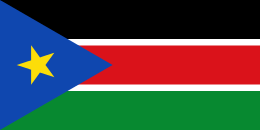 South Sudan[21]
South Sudan[21] Syria
Syria Swaziland[22]
Swaziland[22]
 Iraqi Police officer holds a Zastava M70 AB2.
Iraqi Police officer holds a Zastava M70 AB2._-_Flickr_-_Peter_Denton_%E4%B8%95%E7%89%B9_._%E5%A4%A9%E7%99%BB.jpg) A member of the Serb Volunteer Guard with an M70AB2 during the Yugoslav Wars.
A member of the Serb Volunteer Guard with an M70AB2 during the Yugoslav Wars. Croatian and US soldiers training with the M70 in 2013.
Croatian and US soldiers training with the M70 in 2013.
See also
References
- ↑ "الرمادي مقبرة الأعادي" [Ramadi cemetery from enemies]. Sendvid.
at 2:22
- ↑ "M70". Weapon Systems Net. Archived from the original on September 18, 2014. Retrieved November 16, 2014.
- ↑ Nurkić 2005, p. 71.
- 1 2 3 4 5 6 Nurkić 2005, p. 72.
- ↑ "History of Zastava Arms 1945–1970". Zastava Arms. 2008. Archived from the original on May 7, 2012. Retrieved November 16, 2014.
- ↑ "Zastava oružje najavila povratak na tržište Angole i Egipta" [Zastava Arms announces return to the market of Angola and Egypt]. eKapija (in Bosnian).
- ↑ "Bosnia Herzegovina Land Forces military equipment". Army Recognition.com. Retrieved October 15, 2014.
- ↑ US Army Africa (2014-05-24). "Burkina Faso Counter Terrorism Company receives training and equipment". US Army Africa. Retrieved 2017-06-12.
- ↑ somervilleafricajournalism (2012-06-01). "Congolese defectors from M23 says Rwanda trained them". AL JAZEERA. Retrieved 2017-06-25.
- ↑ "Kipar prodaje Maliju Zastavine kalašnjikove" [Cyprus selling Mali Zastava Kalashnikovs]. Kurir (in Bosnian). February 1, 2013.
Kiparsko Ministarstvo odbrane ponudilo je 2.364 automatskih pušaka koje je proizvela kragujevačka “Zastava”, afričkim snagama koje pomažu vlastima u Maliju u borbi protiv islamskih ekstremista. ("The Cypriot Ministry of Defence has offered 2,364 automatic rifles produced by the Kragujevac-based "Zastava", to the African forces to help the authorities in Mali to fight Islamic extremists.")
- ↑ Master Sgt. Dawn M. Price (2011-02-02). "Djiboutian Army Quick Reaction Regiment trains at Ali Oune, Djibouti, February 2011". US Army Africa. Retrieved 2017-06-25.
- ↑ "Annual Report on the Transfers of Controlled Goods in 2008" (PDF). Stockholm International Peace Research Institute. Belgrade. 24 September 2010. Archived from the original (PDF) on December 21, 2014.
- ↑ "Gunmen attack mall in Kenya". NBS News. Retrieved September 23, 2013.
- ↑ "Kosovo 'imams held' in raids on Islamic State recruitment". BBC News. September 17, 2014. Retrieved September 17, 2014.
- ↑ Army Recognition (2011-01-13). "Montenegro Ranks and combat uniforms Montenegro Army". armyrecognition.com. Retrieved 2017-06-25.
- ↑ "Palestinian security men, Hamas gunmen killed in West Bank clashes". Xinhua. May 31, 2009. Retrieved November 16, 2014.
- ↑ "Ranks and combat uniforms Rwandan army". Army Recognition. November 2, 2008. Retrieved November 16, 2014.
- ↑ Johnny Saunderson (1991-03-01). "Stock Photo - 1st March 1991 Saudi Arabian coalition soldiers fire a Kalashnikov AK-47 gun into the air in celebration in Kuwait City". Alamy Stock Photo. Retrieved 2017-06-22.
- ↑ Jones, Richard D., ed. (January 27, 2009). Jane's Infantry Weapons 2009/2010 (35th ed.). Jane's Information Group. ISBN 978-0-7106-2869-5.
- ↑ "Oropali SKB Banko v Ljubljani" [SKB bank in Ljubljana robbed]. RTV Slovenija (in Slovenian). October 12, 2015.
- ↑ Jason Patinkin (2017-06-21). "Report Accuse South Sudan Forces of Looting". allAfrica. Retrieved 2017-06-25.
- ↑ WELCOME DLAMINI (2013-05-30). "Army to recruit more soldiers". Times of Swaziland. Retrieved 2017-06-15.
Sources
- Nurkić, Fadil (2005). Oružje bosanskog otpora. Slovo.
- "Пешадијско наоружање: Аутоматска пушка 7,62 mm М70" [Infantry weapons: Automatic Rifle 7.62 mm M70]. Serbian Army.
External links
| Wikimedia Commons has media related to Zastava M70. |
- "Assault Rifle M70 B1". Zastava Arms.
- "Assault Rifle M70 B3". Zastava Arms.
- "Assault Rifle M70 AB2". Zastava Arms.
- "Assault Rifle M70 AB3". Zastava Arms.
- "Submachine Gun M92". Zastava Arms.
- Zastava M70 at the Internet Movie Firearms Database
- "Zastava M70". ArmiMilitari.it.
